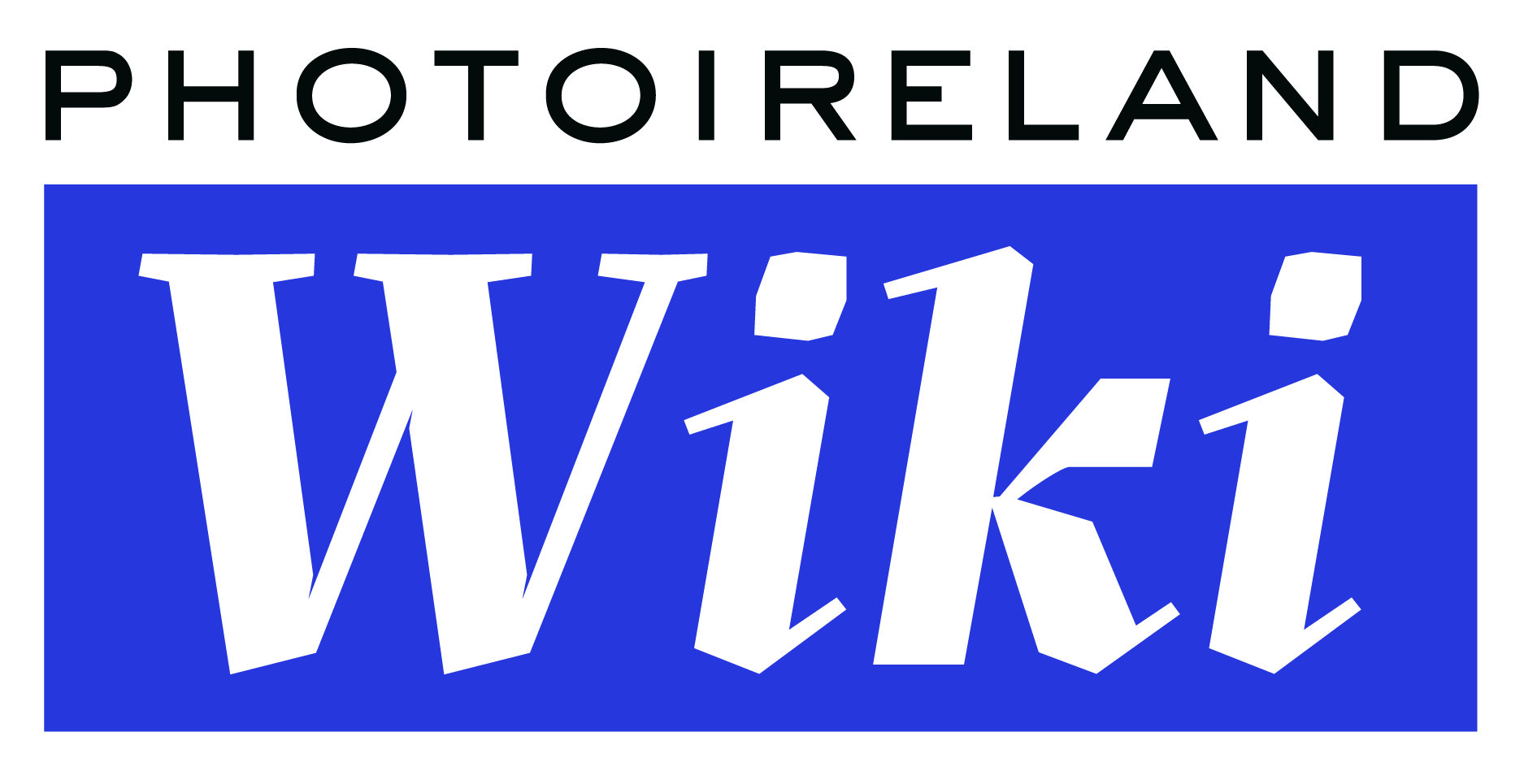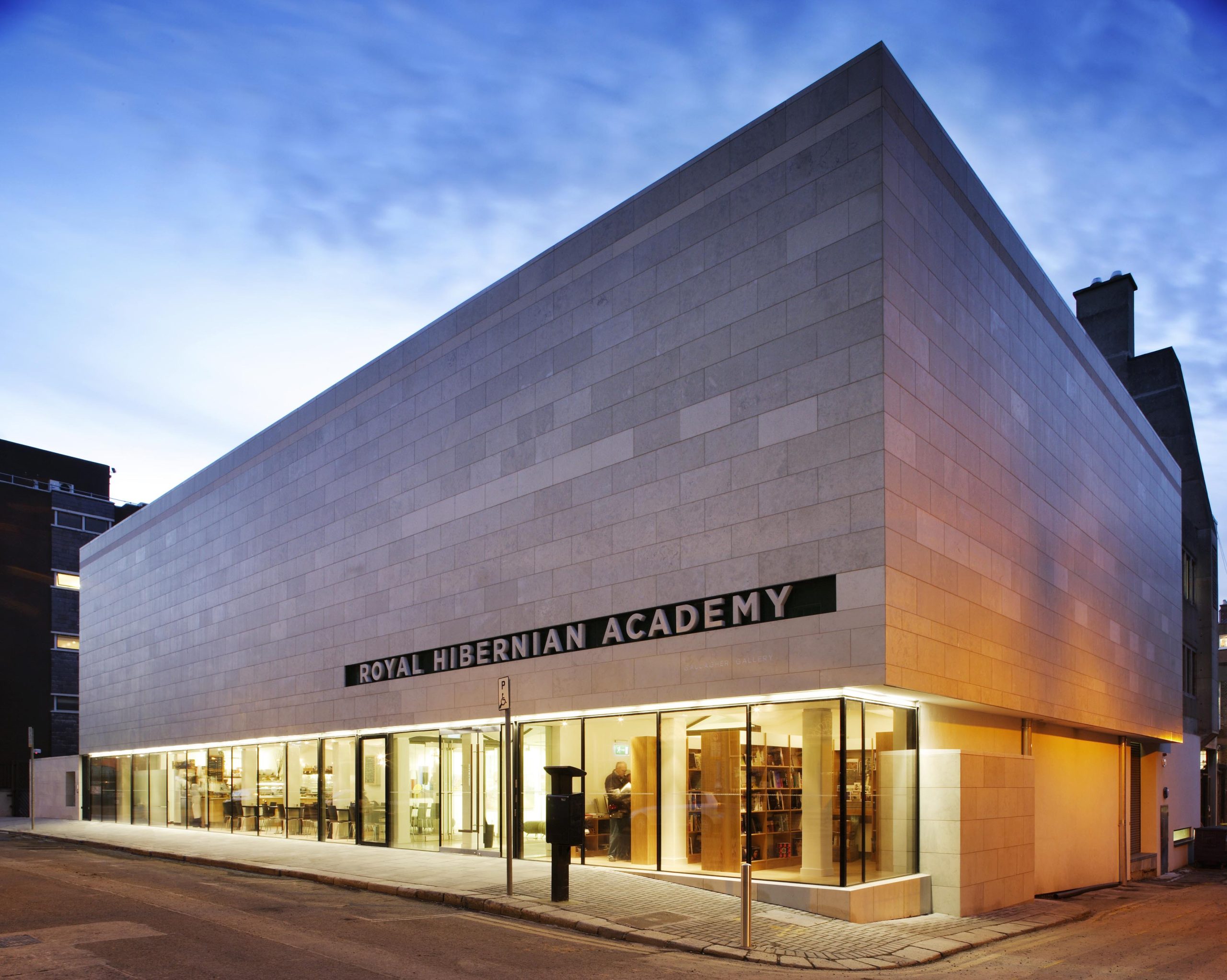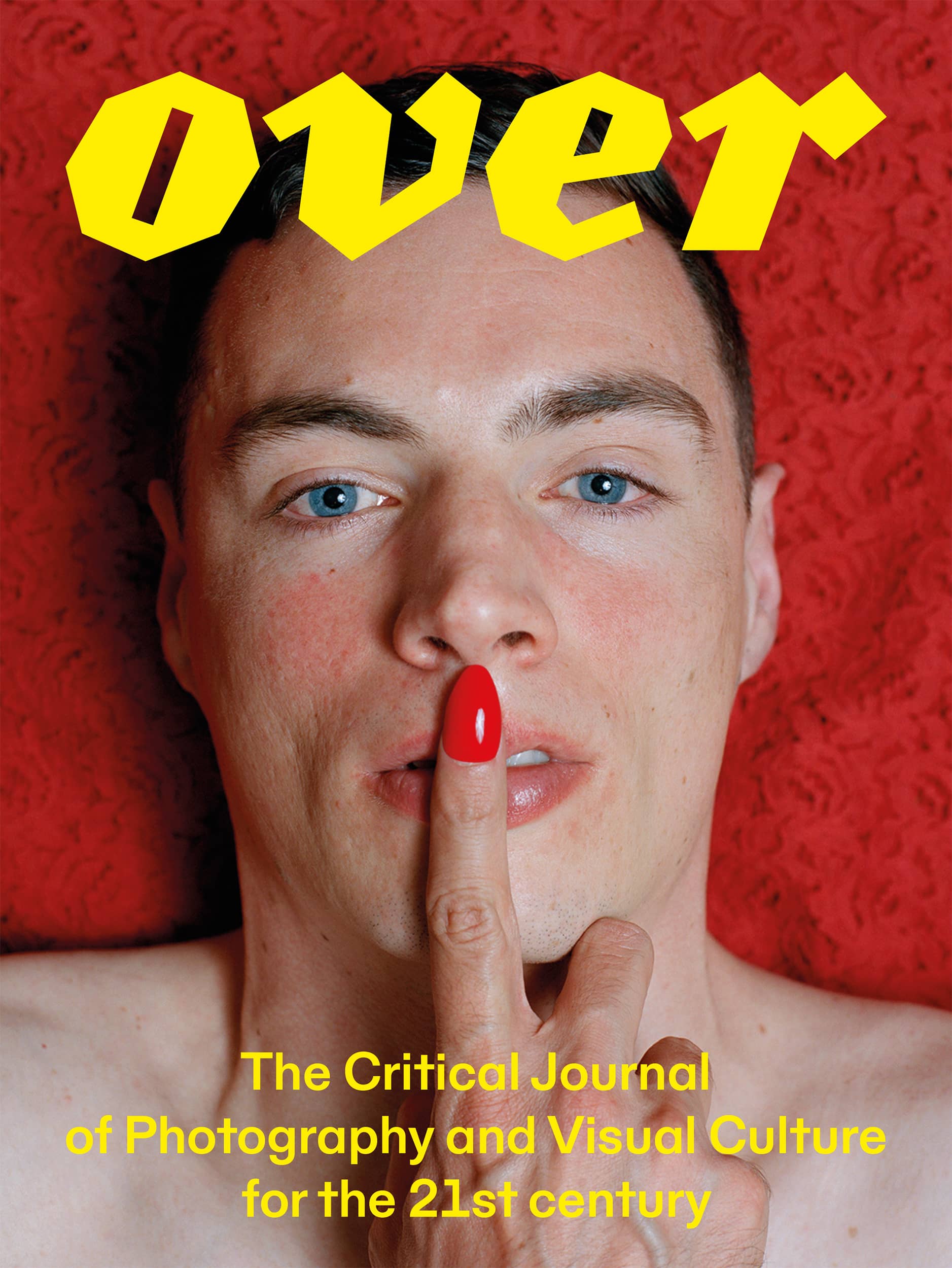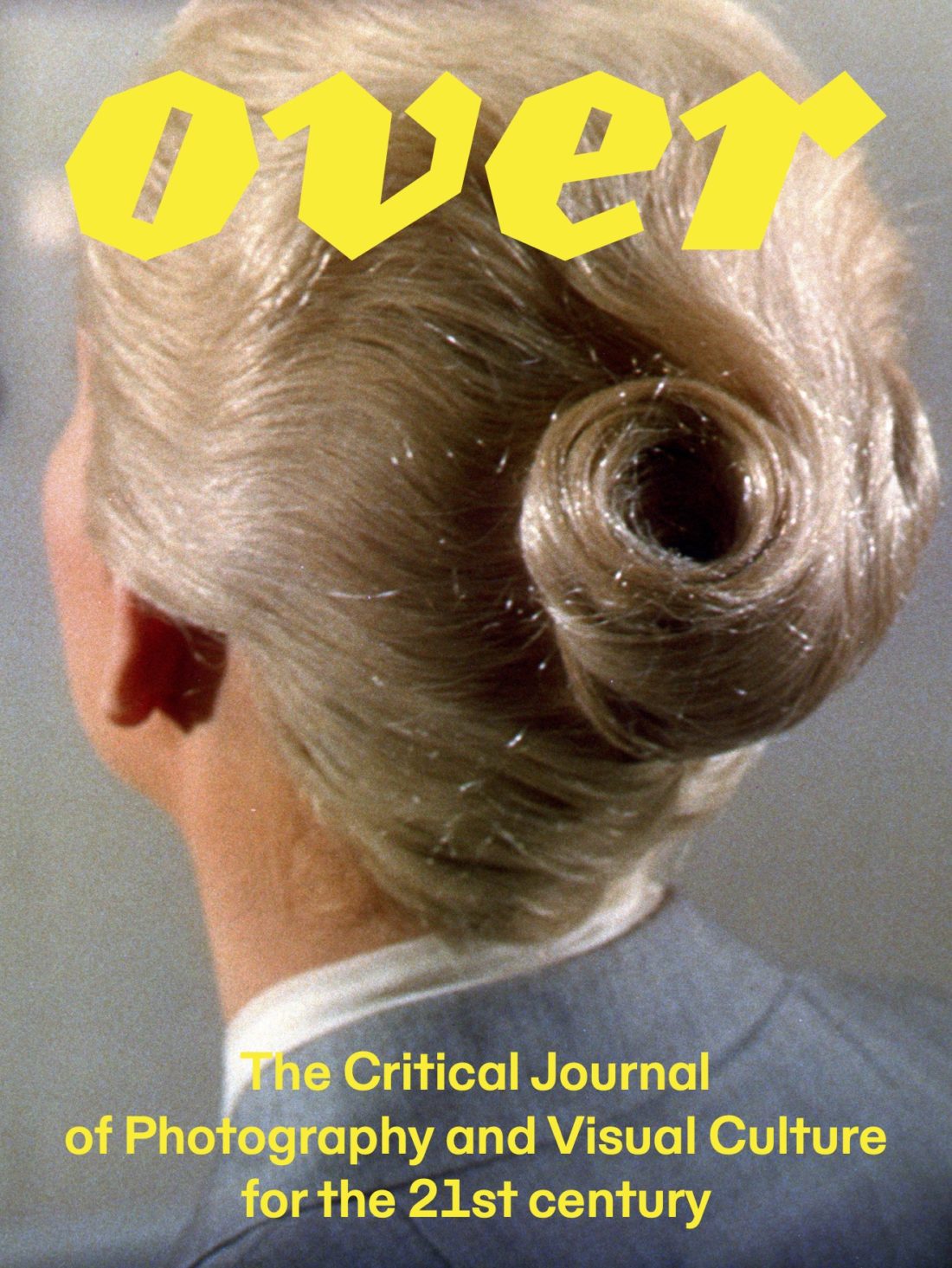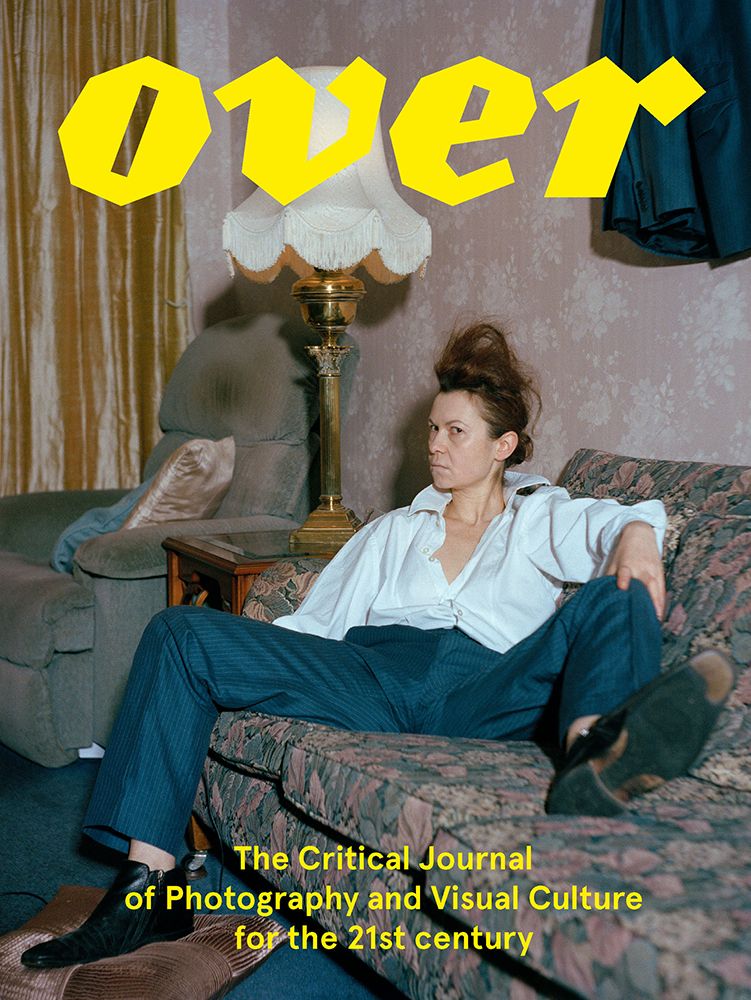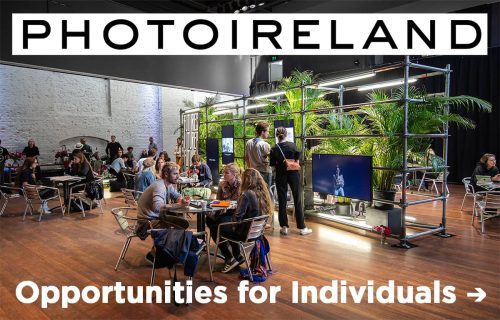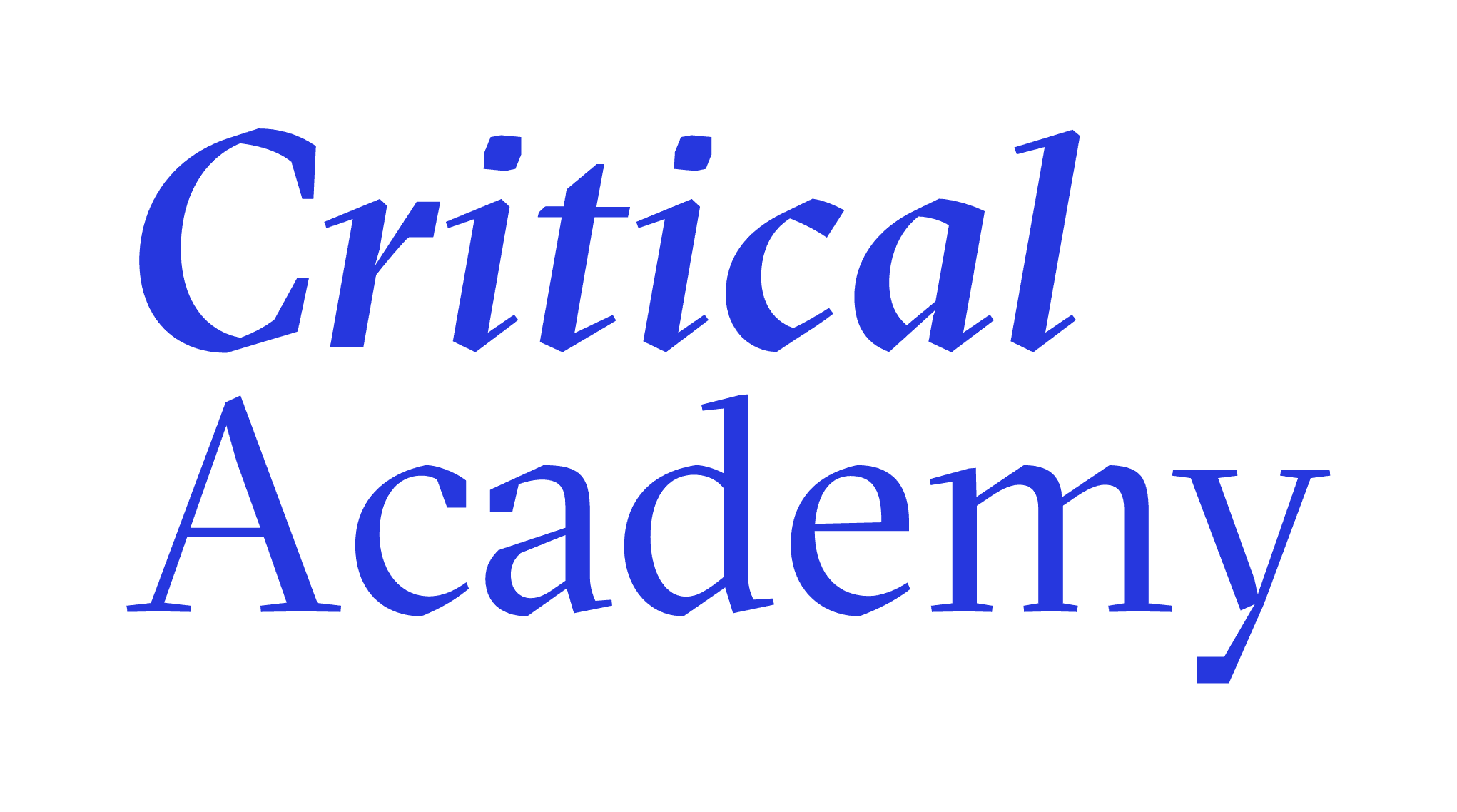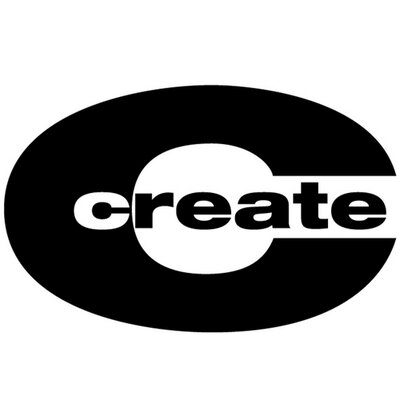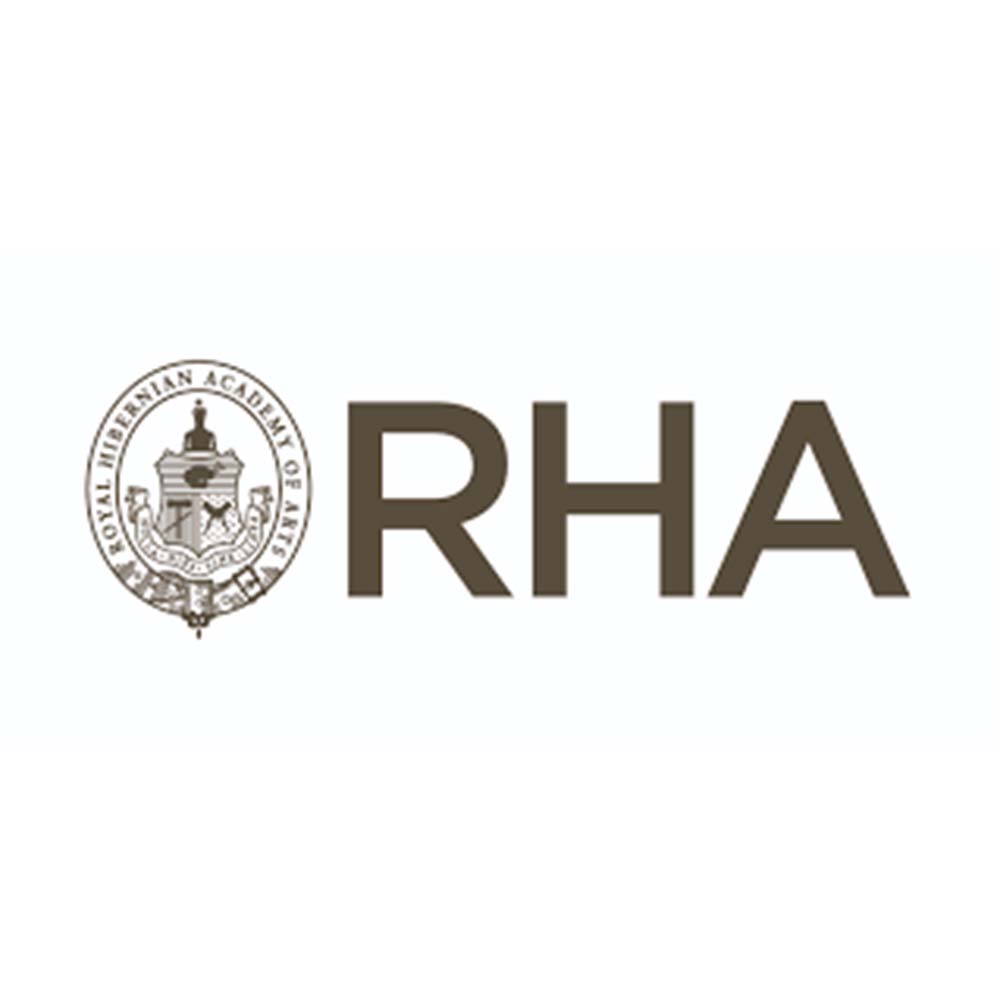
The Royal Hibernian Academy of Arts lives in the centre of Dublin City in a modern building with five gallery spaces and multiple studios for student courses and artist residencies.
The RHA has always aspired to cultivate Art in Ireland. For 200 years they have been run by eminent artists and architects, elected by their peers in recognition of their work. RHA Academicians work in tandem with the gallery team and RHA director to realise the core vision of supporting artists, training students and exhibiting contemporary art: to concentrate native talent in one place, as one community.
In its earliest years funding for the Academy was underwritten by the English monarch. Today, the institution operates as independent Irish charity, receiving much of its income from exhibitions and important donors. Having existed either side of the Republic’s formation, and through the war of independence, the RHA plays a significant part within both the historic and art-historic landscape of the country.
The RHA has a diverse exhibition programme of both traditional and new art forms, created by RHA Academicians, up-and-coming names and nationally and internationally recognised artists. This includes the RHA Annual, Ireland’s largest and longest running open-submission art exhibition, both organised and judged by our member artists. 1
History
The Royal Hibernian Academy originated when artists from the Society of Artists in Ireland petitioned the then Viceroy, Earl Talbot, in the late 1700s for the opportunity to exhibit their works annually. A Royal Charter was finally granted in 1821, and the deeds received in 1823, giving the Academy independence from all other institutions. Celebrated landscape painter William Ashford served as the first President. Artist, Abigail O’Brien is currently the 24th President of the RHA, which is made up of 30 Members, 15 Senior Members and 10 Associate Members, all of whom are professional artists. The disciplines of Architecture, Painting, Sculpture and Print (including Photography) are all represented by the Academy’s broad national membership.
In 1825 Francis Johnson, the esteemed Georgian architect and second President, endowed the Academy with a house and Exhibition Gallery in Lower Abbey Street, which was subsequently destroyed by fire during the Easter Rising of 1916. J.M. Kavanagh, the Keeper at the time, managed to leave the burning building with the Charter and some bank records, but the entire Annual Exhibition of that year, other work and many other records were lost. The Academy was without a permanent premises until 1939, when it acquired the house and garden of 15 Ely Place.
In the interim the Annual Exhibitions were held either in the Metropolitan School of Art or in the National Gallery. In January 1970 Matthew Gallagher of the Gallagher Group offered to provide the RHA with a complete gallery on the site at Ely Place. Designed by Raymond McGrath RHA, the new building was completed by Dr. Arthur Gibney PPRHA, and finally opened to the public in 1985 for the 156th Annual Exhibition, the first the RHA could hold on their own premises in 69 years.
Today the RHA is an artist-led organisation, a 32-county body with charitable status. Its core remit is to support contemporary art and artists in Ireland through exhibition, education and advocacy. The Exhibitions programme also brings significant contemporary international art to Irish audiences. The RHA Ashford Gallery encourages young artists not already showing with a commercial gallery. The RHA administers a significant prize fund at its Annual Exhibition as well as two generous travel bursaries and runs extensive Education and Friends programmes. In its Gallagher Gallery, located in the centre of Dublin, it hosts many events both cultural and corporate. This combination of history, venue, active support and vision for the future places the RHA at the heart of Irish Art. 2
Exhibitions
Selected exhibitions
-
2022, 192nd RHA Annual Exhibition, Group Exhibition
- 2021, Tomorrow Is Sunday, Miriam O’Connor, Solo Exhibition
- 2021, The Long Disease: La Stories, Fiona Hackett, Solo Exhibition
- 2021, Asylum Archive, Vukašin Nedeljković
- 2020, Folly & Diction, Alan Phelan, Solo Exhibition
- 2019, Cillín, Tommy Weir, Solo Exhibition
- 2019, April, The Terrain, Martin Healy, Royal Hibernian Academy
- 2015, Erris, Amelia Stein, Solo Exhibition
- 2014, YU: The Lost Country, Dragana Jurisic, Solo Exhibition
- 2012, An Artist, The Studio, and all the rest…, John Beattie, Solo Exhibition
- 2011, James Coleman, Solo Exhibition
- 2011, Temperance, Abigail O’Brien
- 2010, At Sea, Gary Coyle, Solo Exhibition
- 2010, Video Killed the Radio Star, Timothy Acheson, Nina Amazing, Fiona Chambers, Jennifer Cunningham, Angela Darby, David Finn, Austin Ivers, Breda Lynch, Kathryn Maguire (Ireland (Republic), James Merrigan, Kevin Mooney (Ireland (Republic), Paul Murnaghan, Jim Ricks (United States), Padraig Robinson, Dominic Thorpe
- 2009, James Coleman, Solo Exhibition
- 2006, Dark Portraits, John Gerrard
- 2002, Bill Viola, Solo Exhibition
- 2001, Eurojet Futures, Mark Clare, (United Kingdom) Brendan Early, Kristina Huxley, Mary A. Kelly, (Ireland (Republic)), Eoghan McTigue (Ireland (Republic)), Liam O’Callaghan, (Ireland (Republic)), Katy Simpson
- 2000, Around Now, Grace Weir
-
1988, Ulster Art in the 80s, Group Exhibition
External links & References
- https://rhagallery.ie/us/
- “History” RHA Gallery Website https://www.rhagallery.ie/about/history/
